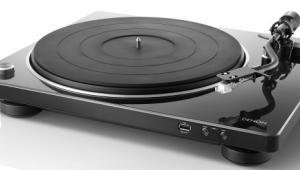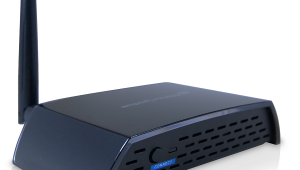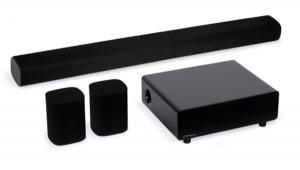Review: Sennheiser Momentum Over-Ear Headphones

Sennheiser has long been a fixture in the professional audio and high-end audiophile market. I’ve used my Sennheiser HD 595 and HD 600 Open Dynamic headphones for many applications - in the studio for reference monitoring, for sound quality consulting, and for audio forensics. When Sennheiser announced the Momentum series, I was instantly curious about these affordable, fashionable, and (somewhat) portable headphones. Would they live up to the brand’s reputation?
The Momentum over-ears are the first in the series; we’ll be taking a look at the on-ear versions shortly. Unlike the ultra high-end HD series, these are part of the Style series from Sennheiser. I have to admit - although they are less industrial, they are still a far cry from the flashy, plastic headphones that are oh-so popular these days. Dare I say, this is a grown-up’s headphone - elegant and classy.
The Momentum uses natural products like soft, subtle Pittards leather ear cups (yeah, Pittards as in plush racing gloves and jackets) and stainless steel bands. This model is available in a classy brown or black with red stitching; black and red do seem to be the “in” color combination these days. There is minimal padding on the leather-encased headband, but it is quite comfortable, mainly because the headphones are lightweight at 190 grams. The closed-back earcups slide up and down on the stainless band and they swivel for a comfortable fit, but they do not collapse or fold up in any way. They come with a sturdy hard-sided carrying case, but it’s somewhat bulky for travel purposes. However, I would accept having to deal with the size of these in order to have their excellent comfort and build quality.
The Momentum comes with two Kevlar cables and a ¼” audio adapter. Kudos to Sennheiser for including a spare cable since that’s the most vulnerable breakage point on most headphones. One of the cables is a standard 3.5-mm mini cable that’s simple to use with bulky phone or tablet cases and covers, but the other cable is more interesting. First, it has an adjustable angle at the connecting point to your player. This is very convenient, and in testing, did not introduce any noise when adjusting the angle while playing music. The cable also contains a small inline module with a microphone and three-button iOS remote. The remote lets you take calls, activate voice commands, adjust volume and play, pause, and skip tracks. Sadly, the remote isn’t compatible with Android systems. When I plugged it into my Sony Xperia, a message popped up saying, “The accessory’s microphone and buttons are not available.” So sad.
How does the Momentum sound? Right off the bat, I can say that it sounds great for a closed, sealed design - remember that I have the open HD 600 and HD 595 in my arsenal. It doesn’t have the soaring highs that an open design will have. However, it does have a very warm, very natural sound. No frequencies felt exaggerated. The bass had a depth and impact that stayed controlled and was never pumped up and in your face. The midrange is where the headphone shines with detail and clarity, although the upper treble is a bit pulled-back.
I listened to the Momentum with the new releases from The Civil Wars self-titled second album. “Dust to Dust” is a simple, beautiful ballad from the duo, and the Momentum lets every detail shine through. It’s not just the clear treble in Joy Williams’ voice, but the clarity of the reverb used on her vocals. Fans of the duo have complained that John Paul White’s voice is too subdued compared to Williams’, and I have to agree. Even with the slightly veiled high-end of the Momentum, I wanted to hear more of his midrange vocals.The subtle kick-drum sound and the lower register of the acoustic piano showcase the natural and accurate sound of the Momentum. The simple bass line was just wonderful - full and rich, but never overpowering.
The other recent release from The Civil Wars is “The One That Got Away.” Williams’ voice soars above White’s, but again, the detailed accuracy of the Momentum brings out things like the subtle twang of the mandolin, nicely differentiated from the dobro. The spaces between the words in the chorus, when the instrumentation stops to let the notes ring out really showcases the quality of the Momentum.
S+V contributor Ken Pohlmann also listened to the Momentum and had similar comments. He typically prefers a warm, dark sound, so the Momentums were just up his alley, although he felt the treble was a little too pulled back and subtle. He noted, “Their dark sound was immediately comfortable, but unfortunately it was just too dark. If they pushed the upper mid, high end forward a bit, this could be my new fav headphone.”
The quoted numbers: The Momentum has a frequency response listed at 16 Hz - 22,000 Hz and the impedance is 18 ohms. Total harmonic distortion (1kHz, 100 dB SPL) is less than 0.5% and the SPL is 110 dB. Brent Butterworth's measurements are below.
Measurements
I measured the performance of the Momentum using a G.R.A.S. 43AG ear/cheek simulator, a Clio FW audio analyzer, a laptop computer running TrueRTA software with an M-Audio MobilePre USB audio interface, and a Musical Fidelity V-Can headphone amplifier. Measurements were calibrated for ear reference point (ERP), roughly the point in space where your palm intersects with the axis of your ear canal when you press your hand against your ear. I experimented with the position of the earpads by moving them around slightly on the ear/cheek simulator, and settled on the positions that gave the best bass response and the most characteristic result overall.
The frequency response measurements are pretty much textbook, with a broad bass boost, another boost centered at 3 kHz, and a somewhat stronger than usual boost between 7 and 9 kHz. Adding 70 ohms output impedance to the V-Can’s 5-ohm output impedance to simulate the effects of using a typical low-quality headphone amp boosts bass by about +0.5 dB.
Total harmonic distortion (THD) at 100 dBA is very low at frequencies higher than 200 Hz, but it rises to 3% at 100 Hz and 12% at 20 Hz. The latter sounds like a big number, but it’s at a very high listening level and a very low frequency, so if you do hear it, you won’t hear if often.
Isolation is typical, maybe just a hair better than average, for an over-ear passive headphone. Impedance averages about 22 ohms. Average sensitivity from 300 Hz to 6 kHz, calculated for 18 ohms rated impedance is 100.7 dB. —Brent Butterworth
Bottom Line
In conclusion, the Momentum are a great-sounding over-ear, closed back headphone. While they lack the “airiness” of an open design, the closed system will prevent listeners from annoying everyone around them. The over-ear design also helps block out ambient noise without adding any of the artifacts sometimes introduced by active noise-cancelling headphones. The Momentum looks terrific, and feel fabulous after many hours of listening. For serious listeners with an adult sense of style, these can’t be beat. Pun intended.
- Log in or register to post comments



































































